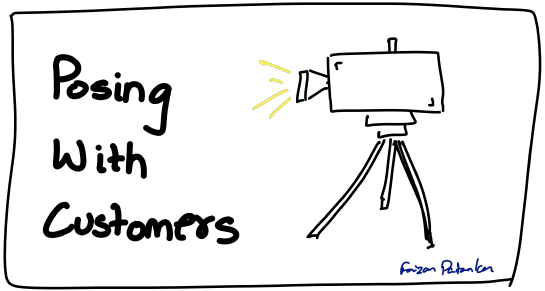Seth Godin wrote a blog titled, “Replacing bad systems with bad systems.”
One thing stood out – “The next time you pose for a photo, keep in mind that we pose for photos because the speed of an exposure used to be so long that if you didn’t pose, the photo was blurred. We changed the tech, but baked in the cultural expectation.”
So often I think our customers are also ‘posing’, and we ask them to ‘pose’.
Thinking of smart maintenance solutions and predictive analytics in the transport industry, there are a number of expectations from a solution – that is meant to break away from existing habits.
Whether it really breaks away – I am not sure.
Because we can’t break away from the cultural expectations of the industry we are in – human-in-the-loop, over-reliance on what happened historically, expecting perfect solutions, detection rate, accuracy, etc
Truth is, none of this is needed to begin.
We pose, our customers pose, and the world poses.
How do you break free?
.
.
.
I could’ve just finished there. As we don’t have the bandwidth to explore all the ways to break free. But I do want to share some ways to break free.
Transport industries have a clash between hardware and software.
In the past 2 years (April 2023), less than 5 leaders I’ve spoken to understand how the hardware (assets) and software (data services) can connect. Building solutions and taking them from nascent starts to established processes takes doing things differently.
A lot of prospects don’t know how to make the switch. But they won’t ask for help. They will pose to show they know how to do it. And we will pose to show they are right – by baking in features that really should not exist.
A way to break free from the posing?
- Align the incentives between maintenance and reliability. Hardware focus should be on reliability. The software focus should be on optimising maintenance operations (MaintOps).
- Take ownership of maintenance where possible. Not a quick fix, but one way to stop posing is by being honest – we need to reduce cost – not get the most accurate solution. Can software pair with 3rd party maintenance?
- Own the transport asset. When we own something, we care for it. If the software is great at finding productivity gains and reducing cost – apply that to an asset you own. So should software startups go and buy transport assets and run them efficiently? Did Amazon build the scalable software and sold books, or did they buy books and then build the software as an afterthought?
We need to stop replacing bad systems with bad systems.
We have to begin somewhere.
